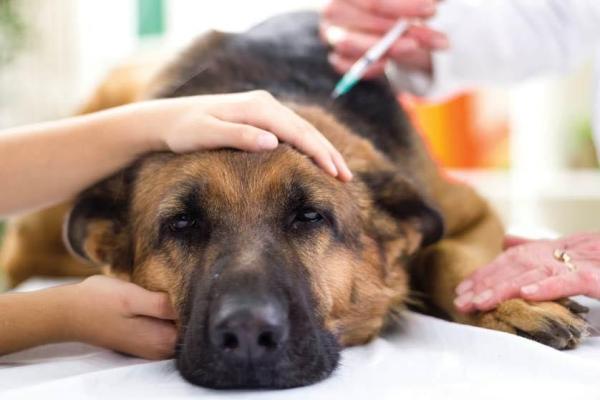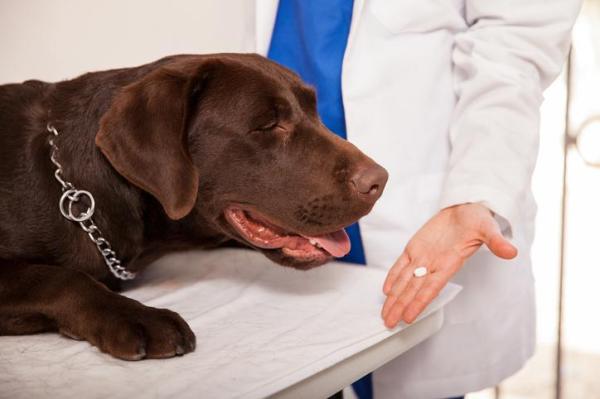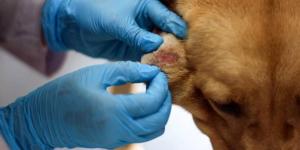My Dog Has a Lump - Types of Lumps in Dogs



See files for Dogs
We can find lumps in dogs in any area of the body and with different characteristics. Most lumps and bumps are benign (non-cancerous), but some of them can be malignant (cancerous). The older your dog is, the more likely they are to get malignant lumps. The good news is that early detection and treatment of cancerous lumps can increase the chances of cure.
In the following AnimalWised article we explain what lumps in dogs are, the different types of lumps, their main characteristics, and their diagnosis and treatment.
Types of Lumps in Dogs
Lumps or elevations on a particular body surface are very nonspecific clinical changes that can have a variety of causes. They may be located anywhere on the dog's body, may occur at a greater or lesser depth, may be focalized at a single point, or may be distributed in a variety of ways. Factors such as age, breed, distribution, and type of lesions play an important role in diagnosis and treatment.
Lumps in dogs can be mainly divided into 2 types:
- Benign, also called non-cancerous.
- Malignant, also called cancerous.
Types of benign lumps in dogs
Among the benign lumps, we can find the following types:
- Warts: they usually appear on the skin and in the mouth, especially in young, older or immunocompromised dogs. They are often benign and disappear on their own.
- Sebaceous cysts: they are caused by a blockage of the sebaceous glands of the skin and are fairly common. Sebaceous gland cysts can occur anywhere on your dog's body. In very young dogs, sebaceous cysts typically appear on the head. In dogs of all ages, the most common locations are the head, neck, chest and upper limbs.
- Lipomas: these are cysts or benign tumors caused by fat accumulation. Lipomas, or fatty tumors, are very common in dogs. In fact, nearly 2% of the dog population is diagnosed with a lipoma each year. Although lipomas are tumors, they are composed only of fat cells and are therefore frequently completely benign. Lipomas feel like soft, easily movable lumps under the skin.
- Abscesses: Abscesses in dogs are pockets of pus somewhere in the body, usually in the skin, mouth, between the toes, or in the body cavity. They are very painful and can cause fever in the animal.
Types of malignant lumps in dogs
Among the most common malignant lumps, we find:
- Mastocytoma: It is a quite common tumor in some breeds, such as the Boxer, the Golden, or the Labrador Retriever. These tumors are formed by blood cells called mast cells.
- Hemangiosarcoma: is another blood tumor that affects the skin. It can appear as small red or black nodules on the skin or inside, although the tumor also occurs in the heart or spleen. It is a serious neoplasm that metastasizes.
- Fibrosarcoma: another tumor with a guarded prognosis that affects the connective tissue rather than the skin.
- Mammary tumors: this tumor is not found in the skin, but in the mammary gland of female dogs (although it can rarely occur in male dogs). There are several types of mammary gland tumors, some of which are more serious than others. However, mammary carcinoma is more common, spreads very rapidly, and can metastasize to the lungs, for example.
As you can see, lumps or nodules on the skin of dogs are quite common and in most cases are not serious. However, it is advisable to consult a veterinary to check the nature of the lump and its appearance and remove it if necessary.

Causes of lumps in dogs
As mentioned before, lumps in dogs are common lesions that have a wide variety of development, presentation, and etiology. There are also many reasons why a lump may appear on your dog, the most common are:
- Vaccines and other injections: When a vaccine is administered or a fluid is injected (antibiotic, anti-inflammatory, etc.), there may be a local reaction at the injection site and the area may become inflamed. This inflammation disappears after some time, although in some cases some substance may encapsulate and the lump does not disappear. For example, it is common for a lump to appear at the injection site 15 days after rabies vaccination and then disappear.
- Stroke: any stroke can cause inflammation at the injection site, especially if a small hematoma develops.
- Wounds: infected wounds can cause large pus-filled lumps. They appear as a soft lump that appears to contain fluid inside (abscess). In these cases, it is necessary to open the abscess and remove the entire infection.
- Stings: A bee or spider sting can cause swelling and pain in the area.
- Tumors: skin tumors are also very common, especially in older animals and certain breeds, although not all are malignant. In other cases, these lumps do not originate in the skin, even though they may appear to do so (lipomas, mammary tumors, etc.).
If you want to know more about the different types of skin tumors in dogs, continue reading this other article. We explain the different types of skin tumors in dogs that exist, what the symptoms are, and the most common treatments.

Diagnosis of lumps in dogs
Age, sex, and arrangement of the lumps are important for an accurate differential diagnosis. Your veterinarian will perform one or more tests to determine the type of lump or bump in your dog and the treatment needed.
First and foremost, the lumpy areas should be visualized and palpated, as the distribution pattern of the lesions and their consistency can lead to a tentative diagnosis, as can adherence to deep levels or superficiality.
Puncture of the nodules, sampling, and cytology of the nodules allow the physician to visualize the cell types they contain and distinguish inflammatory cells, bacteria, or neoplastic cells, among others, using the fine-needle aspiration technique. However, this technique should be supplemented by microbiological cultures to determine the pathogens present.
Collection of biopsy specimens under patient sedation allows histologic analysis to aid in patient diagnosis and prognosis.

Treatment for lumps in dogs
The therapeutic protocol depends on the diagnosis previously made. The age of the patient and whether treatment is really necessary should be taken into account, since, for example, lesions such as papillomatosis nodules do not require specific treatment.
The goal of therapy is to address the primary cause of the pathology.
In case of cancerous tumors, the following options are available: surgical treatment, combination therapy of surgery and chemotherapy, radiotherapy, chemotherapy alone, and immunotherapy.
For abscesses and cysts, the contents should be removed, and the area disinfected, and anti-inflammatory and antibiotic medications should be administered to relieve clinical symptoms as well as the primary cause.
For nodules caused by allergic reactions or direct skin lesions, appropriate dermatological treatment should be given with washing, disinfection, nutritional supplementation and even corticosteroid therapy.
Finally, cutaneous neoplasms should be removed and treated with chemotherapeutic agents depending on their aggressiveness, depending on the prognosis of the tumor and the health status of the geriatric animal.
Continue reading this other article if you want to learn more about the different types of abscesses in dogs and their treatment.

This article is purely informative. AnimalWised does not have the authority to prescribe any veterinary treatment or create a diagnosis. We invite you to take your pet to the veterinarian if they are suffering from any condition or pain.
If you want to read similar articles to My Dog Has a Lump - Types of Lumps in Dogs, we recommend you visit our Other health problems category.
- Carlson and Giffin. (2002). Canine Veterinary Practice Manual . Madrid. Editorial el Drac.









